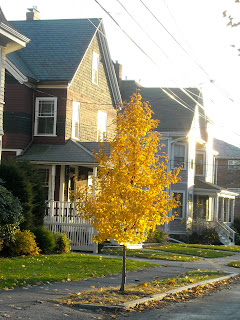 |
As a goal-oriented person, I enjoy setting my sights on an accomplishment and figuring out how I will get there. My executive functioning skills are quite intact. I am quite good at setting realistic goals, determining the steps I need to take to reach them, planning my time accordingly, and staying disciplined as I work toward my goals. So the question becomes: Why can't I stick to my New Year's Resolutions? Looking back at three goals that I have successfully achieved this year has helped me to clarify what conditions are needed to ensure my success in accomplishing goals.
GOAL #1: Finding an Apartment
Back in February, I learned at the beginning of my February vacation (10:00am on Saturday morning!) that I would need to vacate my apartment in several months, right around the time of my sister's wedding. Heartbroken and anxious to leave an apartment I had grown to love, I set my mind to finding an apartment by the end of the week, before returning to school. Throwing aside my plans for vacation, I put all of my time, effort, and energy into finding an apartment. That whole afternoon I researched listings and booked appointments. Luckily, I found a great place within a few days, signed a lease a few days later, and received a key a few after that. Since my first goal was accomplished within a few days, I created and successfully reached two new goals: packing up my apartment by the end of vacation week and actually moving into a new apartment only thirteen days after finding out I needed to move.
Conditions that Helped Me to Be Successful and Disciplined in Reaching this Goal:
A pressing need (needing to find a new place) with a specific time frame attached (knowing that I would need to move before my sister's wedding) and the resources to achieve the goal (time, energy, effort)
GOAL #2: My Professional Development Plan for School
At the beginning of every new school year, I always think of a few new things that I want to work on or develop. This helps to keep my teaching new and fresh from year to year. My district requires teachers to formalize goals into a written statement, signed by both the teacher and the principal. It contains a series of steps that will be taken to reach the goal, people who will help, and evidence that the goal has been accomplished. Each year, I choose something that I am already interested in working on further-- that way I am already motivated. This year, I am already well on my way to accomplishing my goal.
Conditions that Helped Me to Be Successful and Disciplined in Reaching this Goal:
My interest in pursuing the goal, being held accountable for achieving it, and the timing of the goal (at the beginning of the school year when there are a whole new set of kids and it makes sense to try out new ideas and teaching techniques.)
GOAL #3: Maintaining This Blog: Living, Teaching, and Creating Courageously
In July 2010, I had the incredible opportunity of attending a weeklong Courage to Teach Institute. As a requirement for obtaining Professional Development Points (PDPs), we were required to write a five page reflection paper that included what we had learned/gotten out of the institute and how we planned to continue the Courage to Teach work. In my reflection paper, I included the following section about maintaining my blog:
"For the past year, I have been wanting to start a personal blog but never had a topic, until now. Inspired by great blogs that my colleagues write, I became excited about having a forum to share my ideas and to create discussions. A fellow participant in the workshop sent a piece of her art work in the mail to members of the group as a thank you gesture. What I thought was really neat was that she included thought provoking and engaging questions to accompany the art. And the wheels in my head started turning...
Thinking about the CTT Institute, I realized that so many of us involved in the courage work are artists, writers, poets, creators. I thought it would be neat to create a blog where art can be used as third things to promote the discussion of ideas. Writing and creating art are two things that help me to be creative. I'm hoping that by making a committment to post to the blog throughout the school year, it will help me to achieve more balance. I'm not sure what a reasonable goal would be: perhaps an entry every two weeks?"
I am proud to say that not only have I achieved this goal but I have far surpassed it. A blog entry every two weeks would have brought me to about 10 entries at this point, but this entry is actually #21!
Conditions that Helped Me to Be Successful and Diciplined in Reaching This Goal:
My enjoyment in keeping up the blog (both writing and taking pictures for it), positive feedback and encouragement from people who read it, and it fulfills a personal passion and need of mine to create.
**********************************************************************************************
In reflecting back upon the conditions that helped me to be successful and disciplined in reaching goals, I've realized that my success is not only dependent upon creating the goal but also in having some of these conditions in place:
*A pressing need
*Specific time frame in which the goal needs to be achieved
*Resources to achieve the goal (time, energy, money)
*Interest and enjoyment
*Being held accountable for reaching the goal
*Goal is created at an appropriate time
*Encouragement from others
*Fulfills a personal need and/or passion
What I finally came to realize is that my New Year's Resolutions are often just that, resolutions. I have thought about goals for the upcoming year without making sure any of the above conditions are put into place.
My Advice: If you are going to make a New Year's Resolution, make sure that you have the appropriate conditions in place to ensure your success. If you determine that you will not be able to have the necessary conditions in place come January 1, then hold off on the goal or the resolution until these conditions can be available. That way, you will not feel like a New Year's Resolution failure!
Questions to Ponder:
1. Think about goals that you have successfully reached. What conditions were in place that helped you to achieve your goals?
2. Think about your New Year's Resolutions for 2011. What conditions will you need to make sure are in place in order to ensure that you successfully achieve your goal?






































